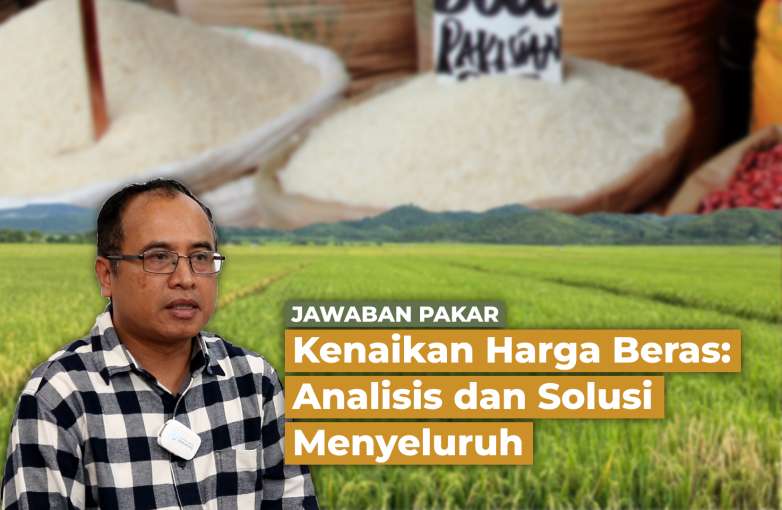
The recent increase in rice prices in several regions in Indonesia has raised concerns among the public. To gain a deeper understanding of this phenomenon, we interviewed Prof. Subejo, S.P., M.Sc., Ph.D., a Professor in the field of Agricultural Extension and Communication from the Department of Agricultural Socioeconomics, Faculty of Agriculture, Gadjah Mada University.
In this interview, Prof. Subejo said that several factors caused the increase in rice prices, as well as their impact on the socio-economic conditions of farmers and society in general.
Causes of Rice Price Increase:
- Environmental Factors: One of the leading causes of the increase in rice prices is the El Nino phenomenon, which will occur in 2023. This will cause the planting season to be late, affecting the availability of rice on the market.
- Social Assistance: Social assistance to more than 10 million households also influences the availability of rice on the market. The increase in rice prices directly impacts households, especially those who do not receive social assistance and can increase the family’s economic burden.
- Limitations of the Food Information System: The inability to integrate food data from the central to village level makes predicting food availability difficult, disrupting the distribution and supply process.
Recommended Solution:
- Import Regulations: The government has tried to import rice to meet market needs, but this also has risks because it can increase the availability of excessive rice on the market. When availability is large, it will also affect prices, so farmers who enjoyed reasonable prices before may not be able to enjoy good prices in the future. Collaboration between central, regional, and village governments is needed to integrate food availability and identify areas experiencing shortages or surpluses.
- Collaboration between parties: Collaboration between central, regional, and village governments is crucial in developing food barns and ensuring equitable distribution.
- Monitoring and Supervision: In welcoming Ramadan, monitoring and supervising market operations is vital in preventing food shortages and optimizing supplies during the holy month.
Efforts to resolve the problem of rising rice prices can positively impact various aspects of sustainable development. For example, by improving food availability and equitable distribution, we can contribute to eradicating hunger. Collaboration between parties to solve this problem also aligns with the spirit of building partnerships to achieve common goals. With joint efforts and the implementation of the right solutions, the increase in rice prices can be overcome, and its impact on the socio-economic conditions of farmers and society can be adequately resolved.
